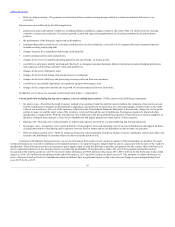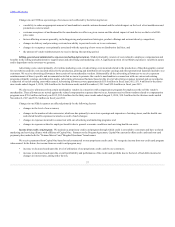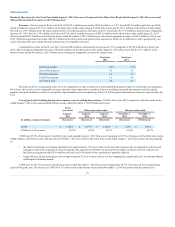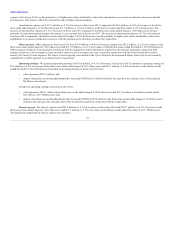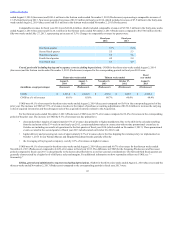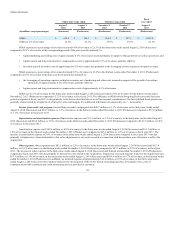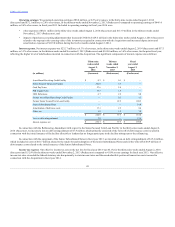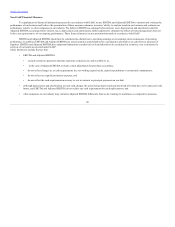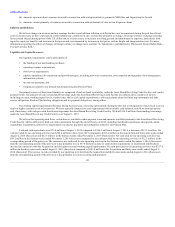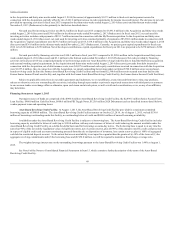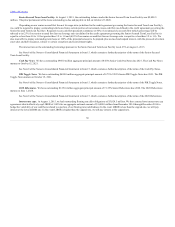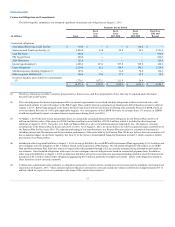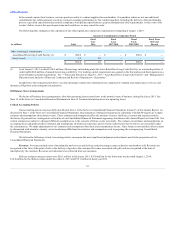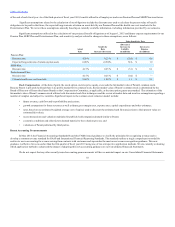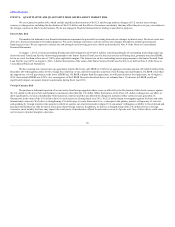Neiman Marcus 2014 Annual Report Download - page 47
Download and view the complete annual report
Please find page 47 of the 2014 Neiman Marcus annual report below. You can navigate through the pages in the report by either clicking on the pages listed below, or by using the keyword search tool below to find specific information within the annual report.
Table of Contents
To supplement our financial information presented in accordance with GAAP, we use EBITDA and Adjusted EBITDA to monitor and evaluate the
performance of our business and believe the presentation of these measures enhances investors’ ability to analyze trends in our business and evaluate our
performance relative to other companies in our industry. We define (i) EBITDA as earnings before interest, taxes, depreciation and amortization and (ii)
Adjusted EBITDA as earnings before interest, taxes, depreciation and amortization, further adjusted to eliminate the effects of items management does not
believe are representative of our ongoing performance. These financial metrics are not presentations made in accordance with GAAP.
EBITDA and Adjusted EBITDA should not be considered as alternatives to operating earnings or net earnings (loss) as measures of operating
performance. In addition, EBITDA and Adjusted EBITDA are not presented as and should not be considered as alternatives to cash flows as measures of
liquidity. EBITDA and Adjusted EBITDA have important limitations as analytical tools and should not be considered in isolation, or as a substitute for
analysis of our results as reported under GAAP.
These limitations include the fact that:
• EBITDA and Adjusted EBITDA:
• exclude certain tax payments that may represent a reduction in cash available to us;
• in the case of Adjusted EBITDA, exclude certain adjustments for purchase accounting;
• do not reflect changes in, or cash requirements for, our working capital needs, capital expenditures or contractual commitments;
• do not reflect our significant interest expense; and
• do not reflect the cash requirements necessary to service interest or principal payments on our debt.
• although depreciation and amortization are non-cash charges, the assets being depreciated and amortized will often have to be replaced in the
future, and EBITDA and Adjusted EBITDA do not reflect any cash requirements for such replacements; and
• other companies in our industry may calculate Adjusted EBITDA differently than we do, limiting its usefulness as comparative measures.
46


